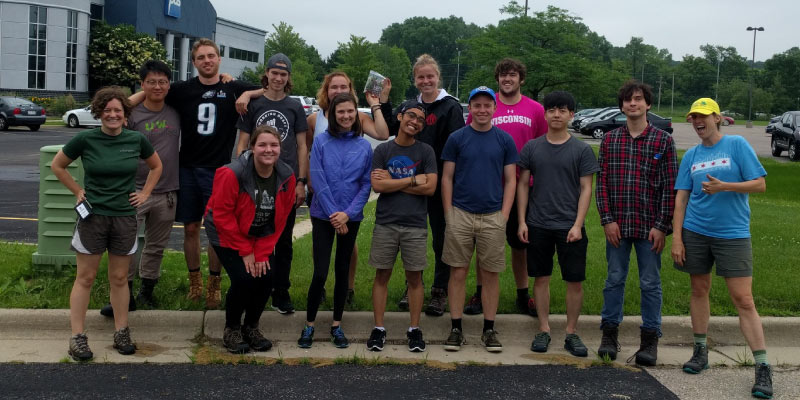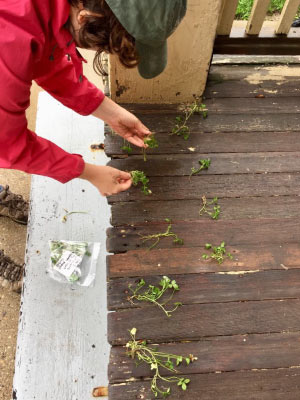
Nelson Institute students and researchers participated in a global study investigating the impact of urbanization on biological evolution. This novel study led by James Santangelo, Marc Johnson, and Rob Ness at the University of Toronto, used social media to develop a network of international collaborators who examined the cyanide defense mechanism in white clover samples from more than 160 cities. By studying this mechanism in clover from urban and rural areas, researchers were able to confirm, and better understand, the impact of urbanization on adaptation.
Vera Pfeiffer, a Nelson Institute alumna and postdoctoral researcher at Washington State University, and collaborator Carly Ziter, who is now an assistant professor at Concordia University, organized the contributions from Madison, WI. The Madison sampling for the study was incorporated into the University of Wisconsin–Madison ecological fieldwork course and involved students from across campus. The contributions were then submitted to the larger study which was recently published in Science.
“I wanted to cover a lot of different fields of ecology so students could see how science gets done in the real world,” Pfeiffer said of her plans for the course curriculum. “And as we talked about study design and procedures and collaboration, that’s when we participated in this global study that we saw through Twitter.”
Pfeiffer used this study as an opportunity for students to gain hands-on experience with data management and collaboration.
“It was just a great way to see how collaboration works and talk about institutions of research while providing data,” Pfeiffer said. “We also talked about urban evolution and went on to focus on community ecology.”
In addition to working with the students, Pfeiffer was excited to collaborate with the 278 authors on this paper including those who led the study as well as those sending the sample kits to different cities.
“Folks in 160 different cities collected this data sampling 40 clover populations in the urban to rural gradient in their city. Conducting the study in this way allowed [the research leads] to look at this through global eyes,” Pfeiffer said. “This is a really cool design and such a cool use of Twitter to do a study at that scale.”

Now that the initial study is complete, Pfeiffer said there are several other studies in the works that are related to the findings. In particular, scientists plan to conduct next generation sequencing and further investigate the genetic data to better understand how the plants are evolving based on their surroundings. Pfeiffer is planning to participate in a few calls regarding the latest research, but she does not plan to be a lead on that research as she is currently conducting studies of her own. As a postdoctoral researcher she is investigating bee viruses but will soon be working on a new study looking at tick vector borne disease in cattle.
Pfeiffer hopes that the students who participated in this research will be inspired just as she was when she participated in research as an undergraduate and graduate student.
“Working in a seascape genetics lab as an undergraduate really just fired me up and made me curious,” Pfeiffer said. “It allowed me to see that data can help us understand what is going on and help us manage environmental resources or see how our activities impact the world. This new study was such a great opportunity for the students to see how studies get done and see the avenues for communication and collaboration across different research environments. It was a really positive experience of being able to contribute to some meaningful science.”